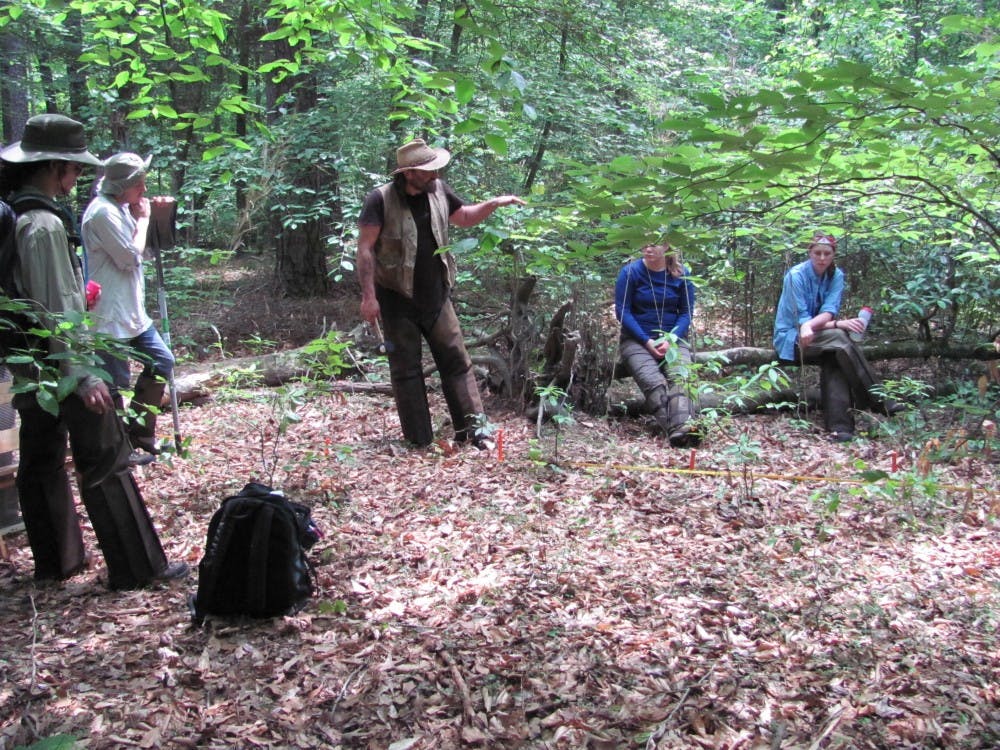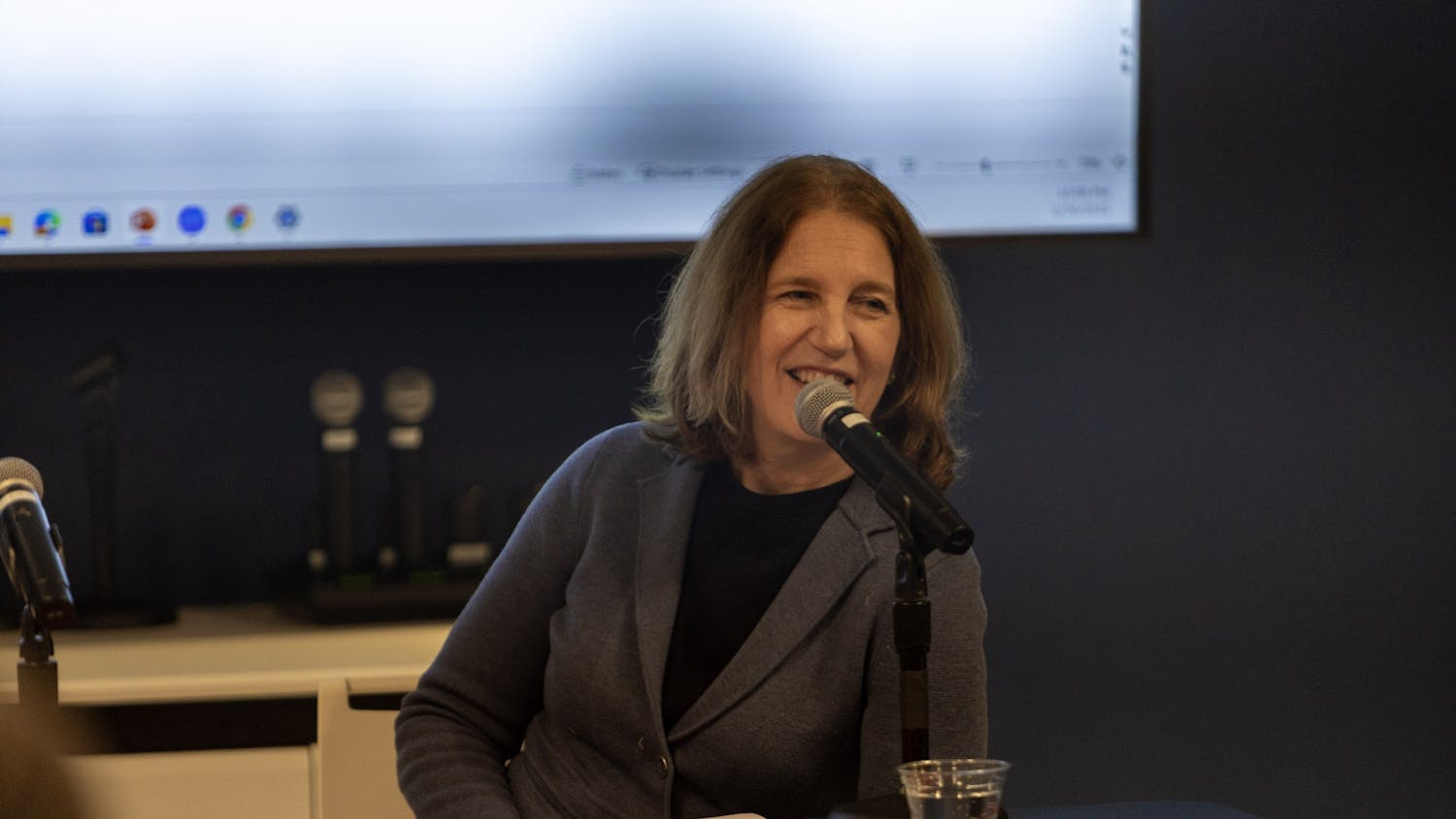Beginning in 2002, a professor and Ph.D. student scrutinized documents, sifted through mounds of dirt and employed modern dating methods. They ultimately demonstrated how a vast wetland stretching from Virginia to North Carolina housed thousands of runaway slaves and Native Americans in the 1800s.
Now, Professor Daniel Sayers and Ph.D. student Becca Peixotto’s research is the focus of “The Great Dismal Swamp,” a documentary that aired on the Smithsonian Channel on Feb. 19.
“Increasingly, I saw the political significance of this history in different lights,” Sayers said. “And then on top of all that, I think, as time went on, people getting interested in it…helped fire up my interest.”
Scholars have tried to prove that runaway slaves lived in the Great Dismal Swamp for decades, according to the Smithsonian Channel. Primary documents lack significant information and there are often people with family ties to the Swamp’s inhabitants who are unfamiliar with the story, Sayers said. Sometimes, descendants are even reluctant to share the information that they do know.
“A lot of this history of the Swamp is going to be guarded,” Sayers said. “This is the kind of history where if your family has a connection to the Swamp, there might be reasons not to go around telling everyone about it.”
One of these reasons is the family’s vicinity to conservative areas that still hang Confederate flags and are stuck in Jim Crow era, Sayers said. Sharing the rebellious nature of their ancestors may be detrimental to the family’s image or wellbeing in their particular area. People may also be skeptical of academics or not believe their family’s spoken history, he said.
Sayer’s interest in the area peaked during his doctoral dissertation project. He sifted through old documents and history books on the area for research. There was little solid information on the Swamp’s history and the communities that lived there in exile, he said. He conducted his hands-on work primarily in the North Carolina region of the Swamp, looking at remnants of Native American and runaway slave sites on small islands.
“At that beginning early stage, I think it was just an absolute fascination with the folks who I was coming to understand may have lived out in the Swamp,” Sayers said.
Peixotto first went to the Swamp as a field school student as she was getting her master’s degree and returned when she began her own doctoral research. Before arriving at the site, Peixotto would use Lidar, an aerial laser scanner, to see through the trees and examine elevations in the Swamp. She used this information to identify more islands in the Virginia section of the Swamp that are similar to the those Sayers was exploring in North Carolina.
“I was really taken with the environment and the challenges of working as an archaeologist in that environment,” Peixotto said. “But also...the people who were living there in the past and the challenges of living in that environment.”
The work by Peixotto and Sayers is not only important to American history, but it is also inspires their students. Senior Emily Duncan was present for the filming of the documentary. She worked closely with Peixotto in the Swamp. She accredits her aspirations to pursue archaeology to the passion that Sayers and Peixotto demonstrated with their work there.
“They’re some of the smartest people I’ve ever met,” Duncan said. “They are both so enthusiastic and they recognize the importance of archaeology and they pass that on to their students.”
To Sayers and Peixotto, their most important findings were physical sites that verified that people had lived in the Swamp and that material culture came with them. Most findings at these sites are small, as large artifacts do not tend to weather the humid and extreme environment well and are more difficult to preserve. These small artifacts, however, can offer vast insight into the life of the Swamp.
“It’s all that micro tiny stuff, little bits of stuff,” Sayers said. “Then you come across an arrowhead or a lead shot or a white clay tobacco pipe fragment and you kind of just blow your top.”
Andreas Gutzeit from Story House Media Group contacted Sayers in 2015 after Smithsonian Magazine published an article on his research. By July 2016, Sayers and Peixotto were back at the Swamp, where Peixotto was actively working at her site. After three days of filming in the Swamp with other students doing field research, they came back to D.C. AU alumni were also part of the process behind the camera, Peixotto said.
The specific field work seen in “Escape to the Great Dismal Swamp” did not yield any new groundbreaking discoveries as they were busy filming and getting the right shots, Peixott said. The film, however, showcased the researchers’ findings and their current work.
“It doesn’t necessarily have to be the full-blown excavation everywhere to be able to still tell us more about life across the whole swamp,” Peixotto said.
The premiere of the documentary on Feb. 19 honored Black History Month because it showed the lost history of runaway slaves that lived in the Swamp. This research in the Great Dismal Swamp is vital, as it delves into a mysterious narrative of American history and allows us to better understand the people who have fought against systematic oppression, Sayers said.
“We need to know more about our radicals—our social radicals,” Sayers said.
Jordan Riccio was a part of Professor Sayers’ first student field research team in 2009 while working on his master’s degree. Riccio rejoined Sayers in 2016 during the filming of the documentary. Riccio said he is also passionate about this work and thinks that it is essential to American history.
“You have a group of people who went to great lengths to find that freedom,” Riccio said. “I think that’s very inspiring and should not be forgotten.”
The movie’s details on the lives of the runaway slaves and Native Americans in the Swamp also help viewers learn how land evolved over time, Peixotto said.
“When we look at our land use and our maps of our space around us today...lots of people have this idea that it’s always been like that,” Peixotto said. “I think we lose something if we don’t investigate.”
This story was originally published in the April print edition of The Eagle.





